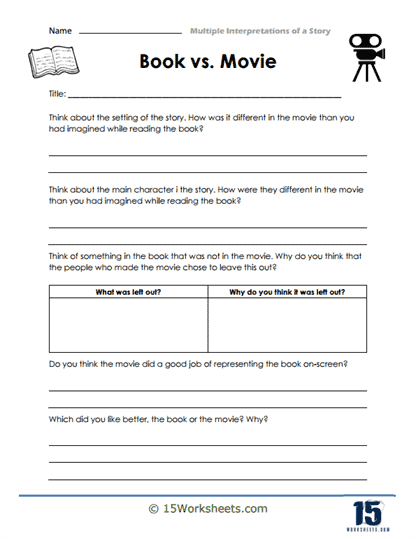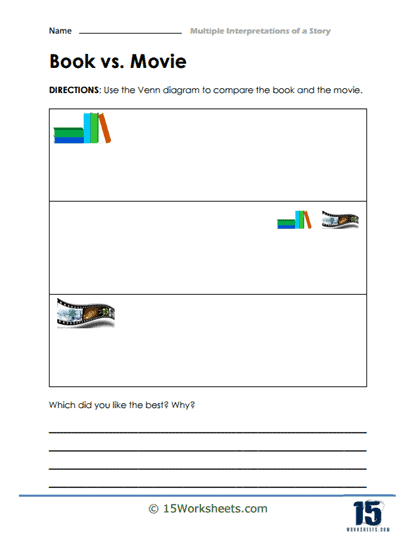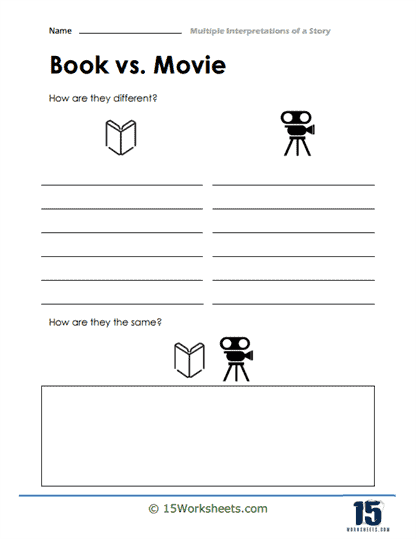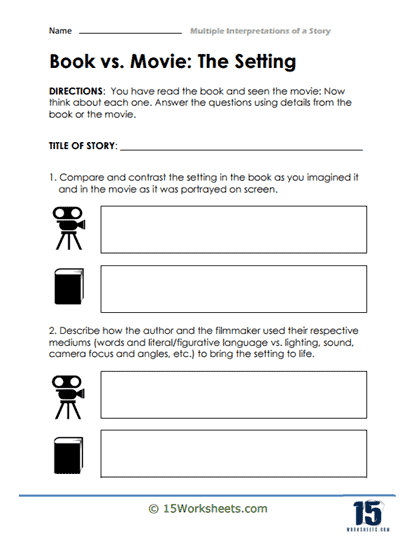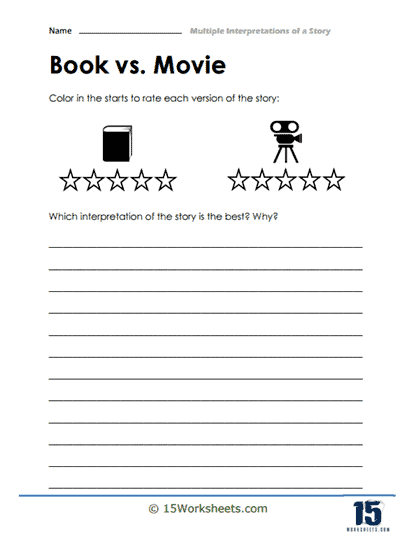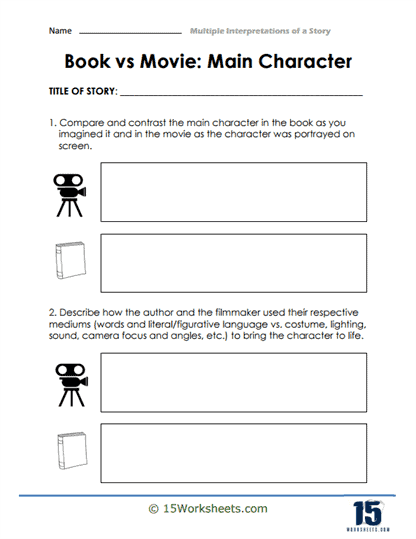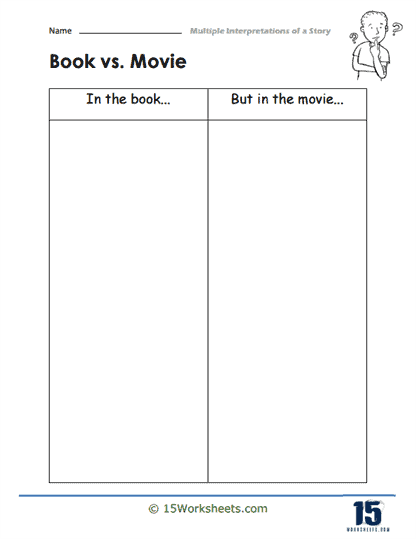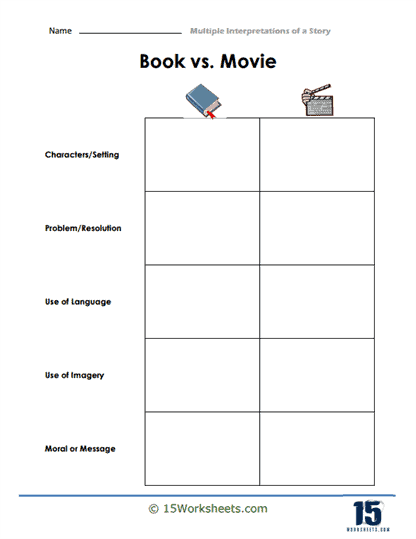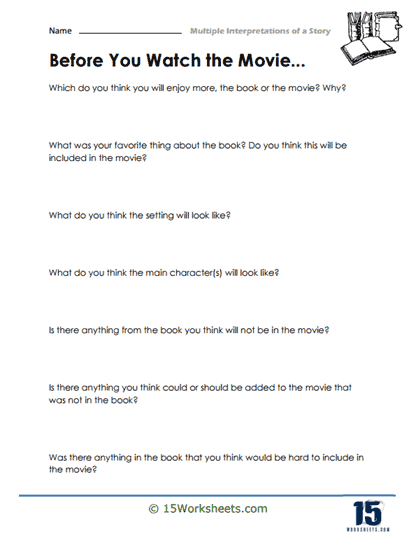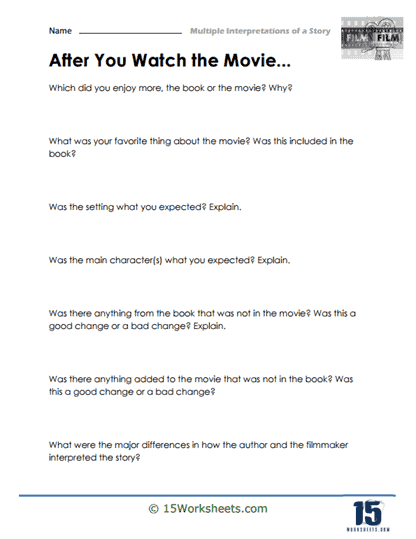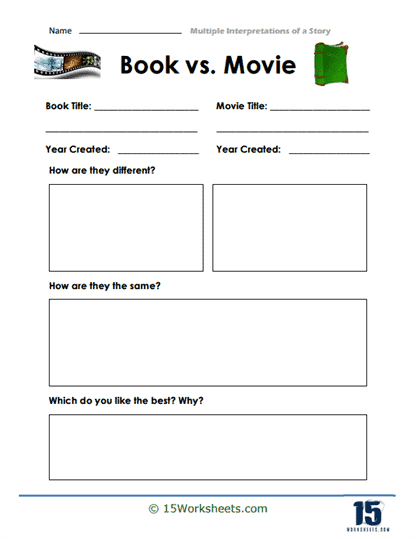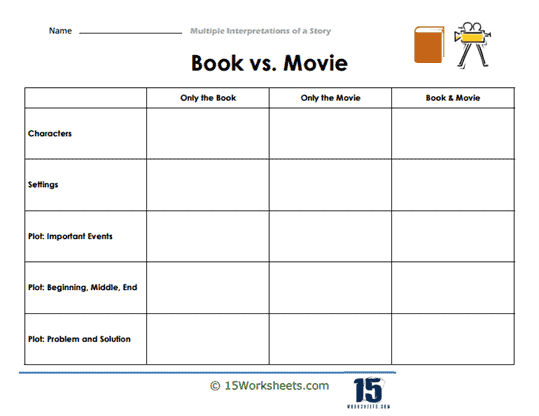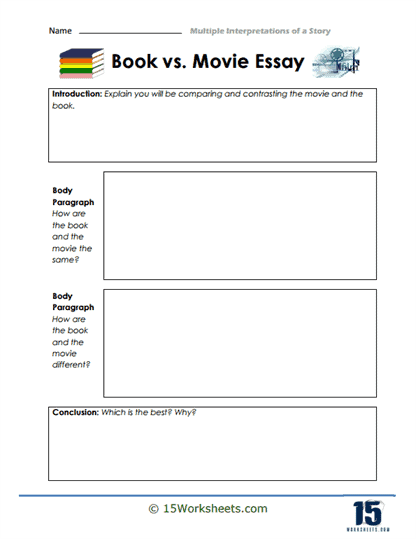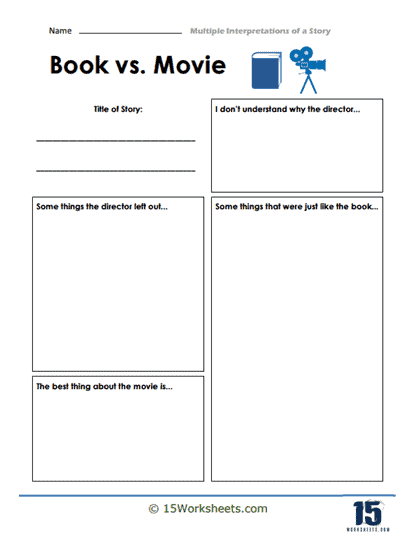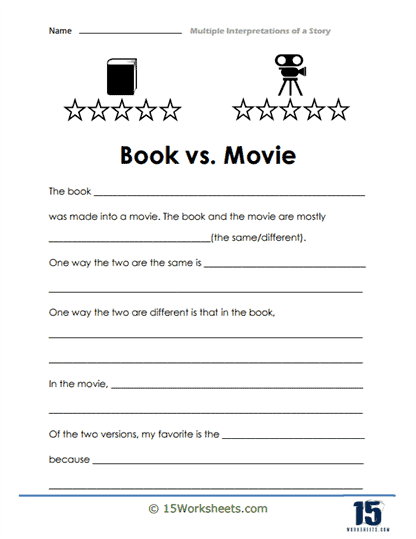Multiple Interpretations of a Story Worksheets
All About These 15 Worksheets
Embark on an enthralling literary journey with our carefully curated collection of 15 immersive worksheets focused on “Multiple Interpretations of a Story: Book Vs. Movie.”
Designed to enhance critical thinking, analytical skills, and literary comprehension, this collection guides students through the captivating world of narratives as they explore the dynamic interplay between written texts and their cinematic adaptations.
The collection presents a variety of interactive activities that encourage students to explore the multidimensional aspects of storytelling through both written and visual forms:
- Comparative Analysis: Students will analyze specific scenes, characters, and dialogues, identifying similarities and differences between the book and movie versions.
- Visual Storytelling Exploration: Worksheets will prompt students to decipher how visual elements like the settings contribute to the storytelling process in cinematic adaptations.
- Character Evolution: Students will track the development of characters across both mediums, identifying changes in their portrayal and motivations.
- Plot Deviation Discussions: Engaging activities will spark classroom discussions about narrative choices, prompting students to consider the reasons behind changes from page to screen.
- Adaptation Reflection: By reflecting on their preferred aspects of each interpretation, students will gain insights into their own storytelling preferences.
Why Is Literature Open to Multiple Interpretations?
Have you ever found yourself asking why is literature open to multiple interpretations while reading a novel or poem?
Literature stems from our imagination. When you read a text of literature, your interpretations of that text may be completely different from someone else’s interpretation of the same text. This is the beauty of literature.
How one sees a text depends on various factors such as experiences, culture, beliefs, education, emotional and mental filters, etc. Let’s discuss this idea in-depth and also learn a few simple steps to help you form your interpretation of any piece of literature you read.
Everybody adds a distinct perspective to every piece of literature they read. This is what makes literature so beautiful. A person’s interpretation of a text is usually based on personal experiences and feelings.
Several schools of thought fall under the umbrella of literary criticism. These schools of thought analyze and interpret literature through various lenses and methodologies.
This is what makes literature so enjoyable. In a literature lesson, you will encounter many interpretations of the same book from various perspectives. In some cases, it could even surprise you since you wouldn’t have thought of the interpretation that someone comes up with.
So it stands to reason that a reader’s interpretation of literature will vary depending on various circumstances such as their background, beliefs, and culture. This idea is the foundation for the renowned literary theory known as Reader Response.
That being said, there are certain exceptions and restrictions on how literature may be interpreted. If someone claimed that Heathcliff from the book Wuthering Heights written by Emily Bronte wasn’t a Byronic hero, their interpretations would be completely false.
This is because nothing in the text supports this interpretation; hence their understanding of the text would be entirely inaccurate.
Therefore, you should always back up your interpretation with textual evidence that could indicate that your reading of the play is accurate. One cannot just alter a literary work’s meaning into something unrecognizable.
How to Form Your Interpretation of Literature
Here are a few steps you can follow to successfully form your interpretation of any piece of literature you read.
1. Read the text a few times. Reading the text a few times is essential to comprehend what is being said. If you are interpreting poetry, reading each stanza multiple times can help you look beneath the surface and create your understanding.
2. Point out the theme or a recurring idea. Every piece of literature has a theme, such as love, good or evil, or revenge. Finding out the text’s theme can help you understand it.
3. Focus on the literary elements in the story, such as characters, symbols, plot, setting, imagery, and mood or tone.
4. Look beneath the lines to see the deeper meaning of the text. The story may be simple in most literary texts, but its idea may completely blow your mind.
5. Focus on each dialogue, as sometimes you will find specific dialogues which will sum up the whole idea of the text.

